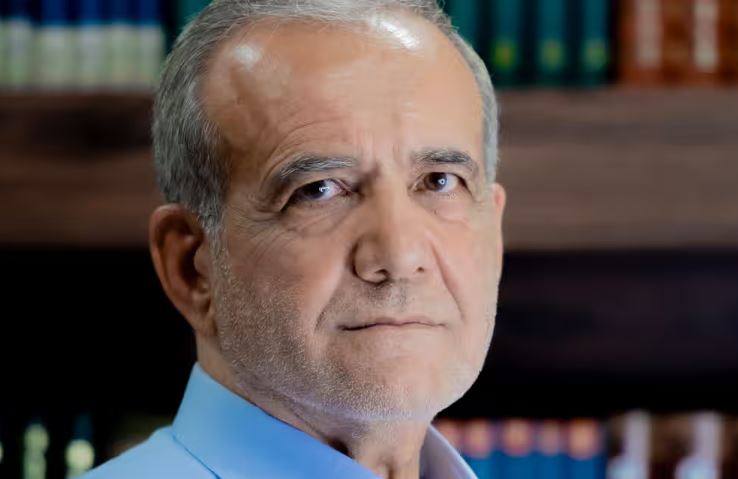Historic Mandate: Pezeshkian’s Ascendancy to Iran’s Presidency
In a transformative political shift, reformist Masoud Pezeshkian ascended to the presidency of the Islamic Republic of Iran, succeeding the late Ebrahim Raisi, who tragically perished in a helicopter crash in May. Pezeshkian, a seasoned heart surgeon at 69, garnered approximately 16 million votes, securing 54% of the electorate in a runoff against the ultraconservative Saeed Jalili. His victory, rooted in support from the main reformist coalition and swathes of the populace yearning for change, marks a significant departure from the hardline governance that has prevailed.
The Reformist Vision: Promises and Pledges
Pezeshkian’s campaign resonated with calls for “constructive relations” with Western nations, aimed at extricating Iran from its international isolation. Central to his platform is the revival of the 2015 nuclear accord with the United States and other global powers, an agreement which disintegrated following the U.S. withdrawal in 2018. Within Iran, Pezeshkian has vowed to dismantle longstanding Internet restrictions and vehemently oppose the enforcement of mandatory headscarves, a contentious issue since the 2022 death of Mahsa Amini in police custody, which ignited widespread unrest.
Inclusive Governance: A Pledge to Diversity
Pezeshkian’s promises extend to the inclusion of women and ethnic minorities, such as Kurds and Baluchis, in his administration. His commitment to reducing the nation’s soaring inflation, currently at 40%, and attracting $200 billion in foreign investment underscores his economic priorities. Pezeshkian’s reformist agenda seeks to alleviate the economic pressures that have beleaguered the Iranian populace.
The Complex Powers of the Iranian Presidency
Despite his presidential authority, Pezeshkian’s powers are circumscribed by Iran’s unique political structure. The ultimate authority resides with the Supreme Leader, Ayatollah Ali Khamenei, who has held this position for 35 years. As president, Pezeshkian will influence domestic and foreign policy and set economic directives, yet his control over the police, army, and the Islamic Revolutionary Guard Corps (IRGC) remains limited. These entities report directly to the Supreme Leader, delineating the bounds of presidential power.
Public Sentiment: Hope and Skepticism
Pezeshkian’s electoral victory has elicited mixed reactions among Iranians. While some, like Abolfazl, a 40-year-old architect, express optimism for a “literate president” to address economic woes, others remain skeptical. Rashed, a barber of the same age, dismisses the impact of Pezeshkian’s win, foreseeing continued decline. Political analyst Maziar Khosravi contends that the populace voted for Pezeshkian’s approach to international engagement, contrasting sharply with the previous administration’s insular stance.
The Path Ahead: Challenges and Opportunities
Pezeshkian’s presidency is fraught with formidable challenges. Conservatives maintain dominance in key state institutions, including a parliament elected in March and controlled by conservative and ultraconservative factions. Notably, Parliament Speaker Mohammad Bagher Ghalibaf, who endorsed Jalili, exemplifies the entrenched opposition Pezeshkian faces. Analysts like Mossadegh Mossadeghpoor assert that ideological issues, such as the enforcement of the hijab, remain beyond presidential reach, falling under religious jurisdiction.
Diplomatic Endeavors: Navigating Geopolitical Realities
On the international stage, Pezeshkian’s diplomatic aspirations hinge on the broader systemic will. Efforts to revive the nuclear deal with Washington and European powers have encountered persistent obstacles. According to Khosravi, a fundamental shift in Iran’s foreign policy approach is improbable. The presidential election unfolds against a backdrop of heightened regional tensions, notably the Gaza conflict involving Israel and Iran-backed groups. Mossadeghpoor predicts that Pezeshkian will maintain Iran’s missile capabilities and support for regional resistance factions, reflecting the enduring complexities of Iran’s geopolitical stance.
Summary:
| Key Learning Points |
|---|
| Pezeshkian’s transformative rise as Iran’s President. |
| Reformist agenda focusing on international relations. |
| Commitment to economic reforms and inclusion of minorities. |
| Limited presidential power amidst conservative dominance. |
| Diplomatic challenges and geopolitical tensions. |
Soumya Smruti Sahoo is a seasoned journalist with extensive experience in both international and Indian news writing. With a sharp analytical mind and a dedication to uncovering the truth, Soumya has built a reputation for delivering in-depth, well-researched articles that provide readers with a clear understanding of complex global and domestic issues. Her work reflects a deep commitment to journalistic integrity, making her a trusted source for accurate and insightful news coverage.



